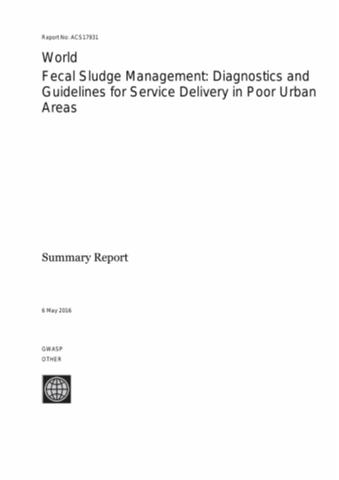The World Bank is a vital source of financial and technical assistance to developing countries around the world. We are not a bank in the ordinary sense but a unique partnership to reduce poverty and support development. The World Bank Group has two ambitious goals: End extreme poverty within a generation and boost shared prosperity.
- To end extreme poverty, the Bank's goal is to decrease the percentage of people living on less than $1.25 a day to no more than 3% by 2030.
- To promote shared prosperity, the goal is to promote income growth of the bottom 40% of the population in each country.
The World Bank Group comprises five institutions managed by their member countries.
The World Bank Group and Land: Working to protect the rights of existing land users and to help secure benefits for smallholder farmers
The World Bank (IBRD and IDA) interacts primarily with governments to increase agricultural productivity, strengthen land tenure policies and improve land governance. More than 90% of the World Bank’s agriculture portfolio focuses on the productivity and access to markets by small holder farmers. Ten percent of our projects focus on the governance of land tenure.
Similarly, investments by the International Finance Corporation (IFC), the World Bank Group’s private sector arm, including those in larger scale enterprises, overwhelmingly support smallholder farmers through improved access to finance, inputs and markets, and as direct suppliers. IFC invests in environmentally and socially sustainable private enterprises in all parts of the value chain (inputs such as irrigation and fertilizers, primary production, processing, transport and storage, traders, and risk management facilities including weather/crop insurance, warehouse financing, etc
For more information, visit the World Bank Group and land and food security (https://www.worldbank.org/en/topic/agriculture/brief/land-and-food-security1
Resources
Displaying 371 - 375 of 4907Fecal Sludge Management
Urban sanitation remains a significant challenge for most low- and middle-income countries. While sanitation coverage has been increasing across both the 48 least developed countries (LDCs) and developing regions as a whole, progress has been relatively slow. In many cities, even where improved on-site facilities are used to contain excreta, the level of quality and access to services for the emptying, conveyance, treatment, and disposal of the resulting fecal sludge is usually limited. These services are collectively called fecal sludge management (FSM) services.
Mali Financial Sector Assessment Program
The housing finance market in Mali
remains small and under developed. Few banks currently offer
a full mortgage product with Banque Malienne de Solidarite,
Mali Housing Bank (BHM), Bank of Africa, and EcoBank being
the main lenders although at minimal levels. The total
annual housing need in Mali based on the household formation
rate amounts to 82,500, split between 51,100 urban units and
31,400 rural units. Overall some social housing is
Does Land Fragmentation Increase the Cost of Cultivation?
To appreciate overall impacts of fragmentation, underlying channels, and potential heterogeneity by holding size, we distinguish average fragment size and mean inter-fragment distance as two aspects of this phenomenon. Estimating a cost function with associated input demand equations on a large nationally representative Indian survey, robust to endogeneity, suggests that fragmentation’s main impact is to reduce mean plot size below the threshold for mechanization. Higher inter-fragment distances increase costs for larger holdings, but by a much smaller magnitude.
Capturing the Co-Benefits of Disaster Risk Management on the Private Sector Side
In most countries, the private sector
owns the vast majority of the buildings and a considerable
portion of the infrastructure at risk. However, most
investment in disaster risk management is made by the public
sector, with the private sector lagging far behind. The
situation represents missed opportunities for businesses to
capture not only higher levels of the direct benefits of
disaster risk management, but also a broader set of
The Role of Regulation on Entry
This paper studies the effects of
differences in local administrative burdens in Italy in the
years 2005–2007 preceding a major reform that sped up firm
registration procedures. Combining regulatory data from a
survey on Italian provinces before the reform (costs and
time to start a business) with industry-level entry rates of
limited liability firms, it explores the effects of
regulatory barriers on the average of the annual entry rates







